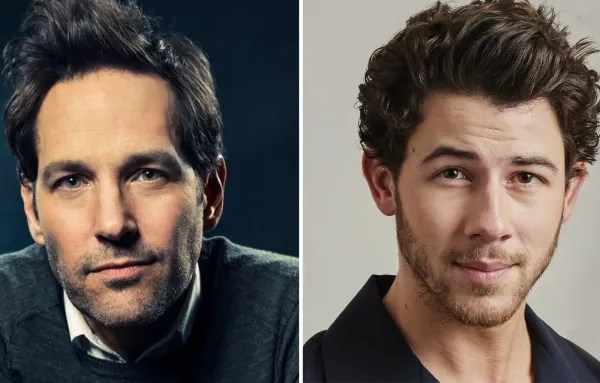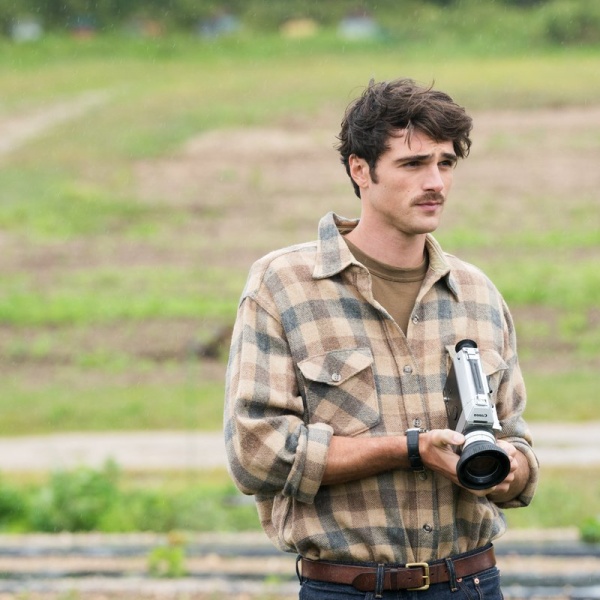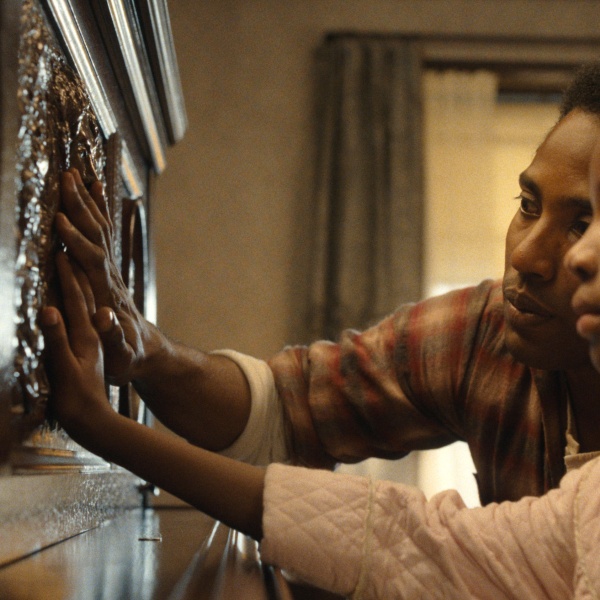This article contains IndieWire’s preliminary Best Makeup and Hairstyling predictions for the 2024 Oscars. We regularly update our predictions throughout awards season and republish previous versions (like this one) for readers to track changes in how the Oscar race has changed. For the latest update on the frontrunners for the 96th Academy Awards, see our 2024 Oscars predictions hub.
The State of the Race
“Maestro” (Netflix) is the one to beat at this point for the remarkable transformation of Bradley Cooper as legendary conductor/composer Leonard Bernstein, but also in the running are “Barbie” (Warner Bros.), “Priscilla” (A24), “Poor Things” (Searchlight), and “Oppenheimer” (Universal).
Other Oscar hopefuls include “The Color Purple” (Warner Bros.), “The Exorcist: Believer” (Universal), “Napoleon” (Apple TV+/Sony Pictures), “The Little Mermaid” (Disney), “Guardians of the Galaxy Vol. 3” (Marvel/Disney), “Killers of the Flower Moon” (Apple TV+/Paramount), “Wonka” (Warner Bros.), and “Saltburn” (Amazon/MGM).
Oscar-winning prosthetic makeup guru Kazu Hiro (“Bombshell” and “Darkest Hour”) looks for his third win with his transformation of Cooper as Bernstein, spanning five decades and involving five stages (both in color and black-and-white). This required the actor-director to be made up at 1 a.m. every morning, taking two to six hours, depending on the stage. The work, in collaboration with Oscar-nominated makeup head Sian Grigg (“The Revenant”) and Oscar-nominated hair head Kay Georgiou (“Joker”), includes prosthetic makeup for the body, face, neck, arms, and hands. The debate about Cooper’s onscreen use of a long prosthetic nose appearing antisemitic was put to rest by Bernstein’s children, Jamie, Alexander, and Nina Bernstein. They found it appropriate to “amplify his resemblance” with makeup.
Greta Gerwig’s billion-dollar blockbuster “Barbie” required the makeup and hairstyling team (overseen by Ivana Primorac) to embody the plastic essence of the Mattel dolls through the actors. But it did not necessarily demand a plastic look. Instead, they went for a more grounded concept built around the human ideal. Skin smoothness, color, and proportions were all worked out. Hair was long and luxurious. And makeup and hair were individually crafted for every Barbie and Ken and each character had its own team. Margot Robbie’s Barbie had a peach look to her skin and she wore special body makeup. She wore nearly 20 wigs and there were more hairpieces stacked on top for volume. Ryan Gosling’s Ken went through a process of finding the right shade of blond and spray-tanned look. Kate McKinnon’s Weird Barbie, with her chopped hair and marked-up face, required special eyeliners to look like Black Sharpie and bright, flat primary colors to make the squiggly lines.
Sofia Coppola’s “Priscilla,” an American princess story about Cailee Spaeny’s teenage Priscilla and Jacob Elordi’s Elvis Presley, touts the work of makeup designer Jo-Ann MacNeil and hair designer Cliona Furey. It begins with the very first time Priscilla draws on her signature winged eyeliner as a teen. She always felt like she was watched. The team started with her having almost no makeup until meeting Elvis. While they date, she starts to add mascara, lipstick, and rouge. But when she moves into Graceland, Elvis proceeds to transform her by making her change her hair to black and accentuating her eyes, which she embraces. This gets carried through the ’60s. However, as the marriage breaks down, so does her makeup, as she finds independence through a more spare, natural look.

Yargos Lanthimos’ “Poor Things,” a twisted Victorian “Frankenstein” gender-bender, stars Emma Stone as Bella, who’s re-animated by unconventional scientist Baxter (Willem Dafoe) with the brain of her unborn child. This results in a strange and surreal transformation from a traumatized woman to a fearless one who upends 19th-century roles and conventions. Oscar-nominated makeup and hair artist Nadia Stacey (“Cruella”), who also worked on “The Favourite” with the director and Stone, uses makeup sparingly but gives Bella long hair and never lets her wear it up. Kathryn Hunter’s Madame Swiney, who runs the Parisian brothel, is covered with more than 100 tattoos and has skin that looks bruised. Meanwhile, Dafoe’s grotesque face resembled the paintings of Francis Bacon with prosthetics.
Christopher Nolan’s “Oppenheimer” boasts impressive work for turning Robert Downey Jr. into the elderly Admiral Lewis Strauss (during the innovative large-format black-and-white sequences). Downey, who’s a strong Best Supporting Actor contender, portrays the antagonist to Cillian Murphy’s physicist J. Robert Oppenheimer, the “father of the atomic bomb.” This is a film about faces, and Downey looks quite distinguished aged up with white hair and makeup embellishment. The team was supervised by the director’s go-to head of makeup Luisa Abel and hair lead Jaime Leigh McIntosh. There’s also a strong prosthetic component when Oppenheimer imagines the impact of the radiation fallout on the faces of his Manhattan Project colleagues.
Blitz Bazawule’s “The Color Purple,” adapted from the Broadway musical, stars Fantasia Barrino as Alice Walker’s celebrated Celie, who’s on a journey to independence through the unbreakable bonds of sisterhood. The makeup and hair, under the supervision of makeup head Carol Rasheed and hair head Lawrence Davis, leans into early 20th-century magical realism. The flamboyant highlight is Taraji P. Henson as jazz singer Shug.
“The Exorcist: Believer,” David Gordon Green’s reboot of the horror masterpiece, demonstrates how far prosthetic makeup has evolved since Dick Smith’s groundbreaking in-camera, practical makeup effects 50 years ago. The Smith DNA is present, but Oscar-winning SPFX makeup designer Chris Nelson (“Suicide Squad”) creates a more naturalistic and believable look of demonic possession, thanks to the latest silicone materials and 3D printing. But his work is doubled here with the possession of Lidya Jewett’s Angela and Olivia Marcum’s Katherine, which required three stages of work (“naughty,” “nasty,” and “gnarly”). In addition, Nelson created makeup effects for a new demon, Lamashtu (played by Lize Johnston of “Guillermo del Toro’s Cabinet of Curiosities”). She looks like an old woman with three eyes along with some of the iconic demonic features that define her mythological folklore.
Rob Marshall’s live-action reworking of Disney’s “The Little Mermaid” featured standout work for Halle Bailey’s Ariel and Melissa McCarthy’s Ursula. In particular, Oscar-nominated hair designer Camille Friend (“Black Panther: Wakanda Forever”) re-imagined the character’s redheaded, flowing locks for the actress using her own hair. She collaborated with Oscar-winning makeup and hair designer Peter Swords King (“The Lord of the Rings: The Return of the King”), who transformed McCarthy into the iconic sea witch.
James Gunn’s Marvel farewell, “Guardians of the Galaxy Vol. 3,” contains a vast array of character work, led by Alexei Dmitriew (makeup head) and Cassie Russek (hair head), and utilized a record 22,500 prosthetics for its ensemble cast. Among the highlights are the Humanimals and Chukwudi Iwuji’s High Evolutionary baddie, with his ripped-face look.
As for the rest: The Osage Nation is the centerpiece of Martin Scorsese’s “Killers of the Flower Moon,” which depicts the 1920s fact-based Oklahoma crime drama about the serial murders of Osage Indians to steal their oil-rich territory. All of the crafts benefited from Osage consultants, which includes the team led by makeup department head Thomas Nellen and key hairstylist James Eaton. Lily Gladstone’s Mollie Burkhart, the key Osage character, experiences an arc reflected in both costume and makeup/hair design.
Ridley Scott’s “Napoleon” recounts the rapid rise to power of Napoleon Bonaparte (Joaquin Phoenix) from military leader to Emperor while raging a romantic war with the love of his life: Empress Joséphine (an unrecognizable Vanessa Kirby). Makeup designer Jana Carboni (“House of Gucci”) and hair designer Francesco Pegoretti (Oscar-nominated for “Pinocchio”) have the epic challenge of transforming their 19th-century faces along with dealing with the soldiers involved in the six legendary battles.
“Wonka,” the musical fantasy prequel from director Paul King (“Paddington”), starring Timothée Chalamet as the famed chocolate maker in training, seizes on a Victorian/Edwardian look. The work is overseen by hair and makeup designer Primorac, special makeup effects designer John Nolan, and prosthetics designer David Darby. Hugh Grant’s Oompa-Loompa gets the most fantastical treatment that we’ve seen in the trailer, but there’s undoubtedly more in store. “Saltburn,” Emerald Fennell’s wicked satire of English wealth and privilege at the dawn of the 21st century, features the makeup and hair design work of Siân Miller, which accentuates sleaze and style.
Potential nominees are listed in alphabetical order; no film will be deemed a frontrunner until we have seen it.
Frontrunners
“Barbie”
“Maestro”
“Oppenheimer”
“Poor Things”
“Priscilla”
Contenders
“Guardians of the Galaxy Vol. 3”
“Killers of the Flower Moon”
“Napoleon”
”Saltburn”
“The Color Purple”
“The Exorcist: Believer”
”The Little Mermaid”
“Wonka”





